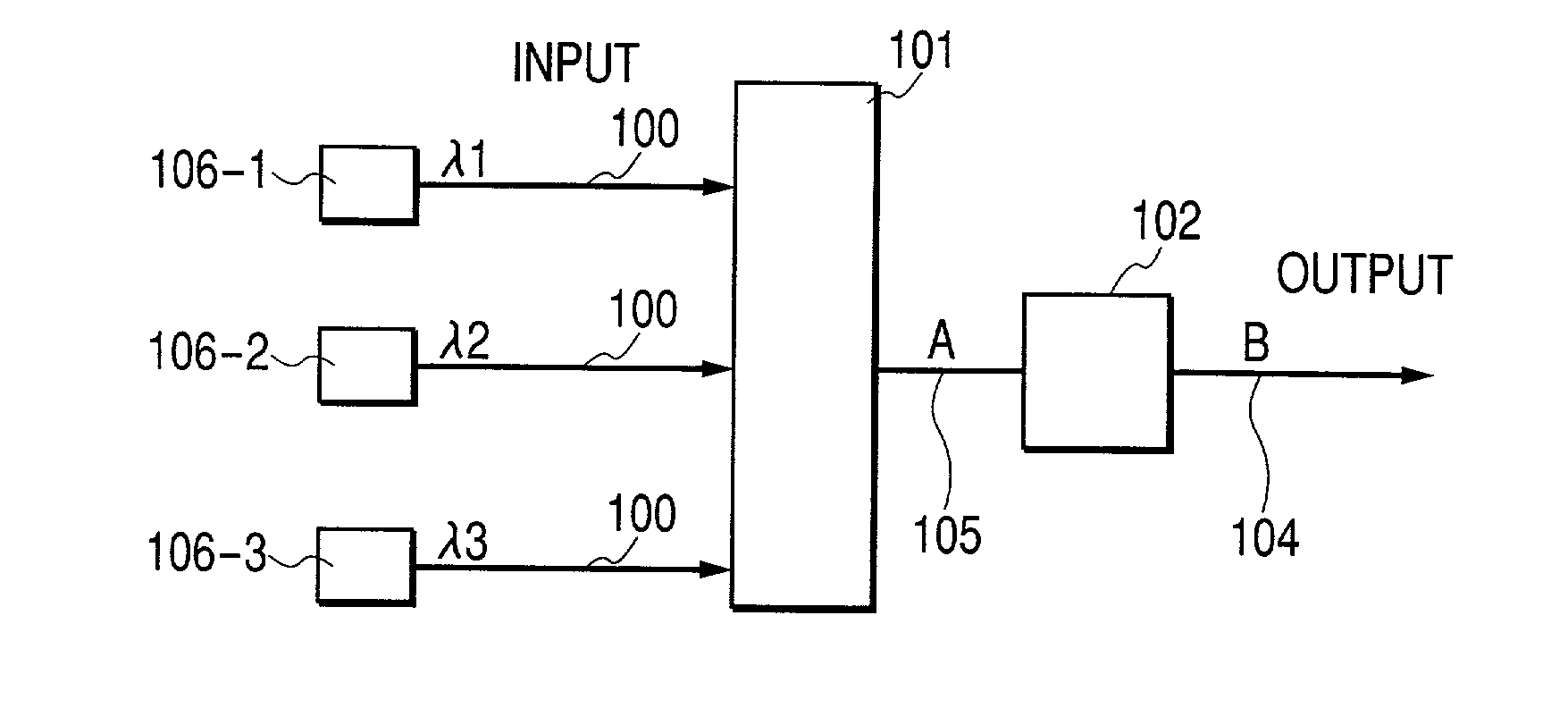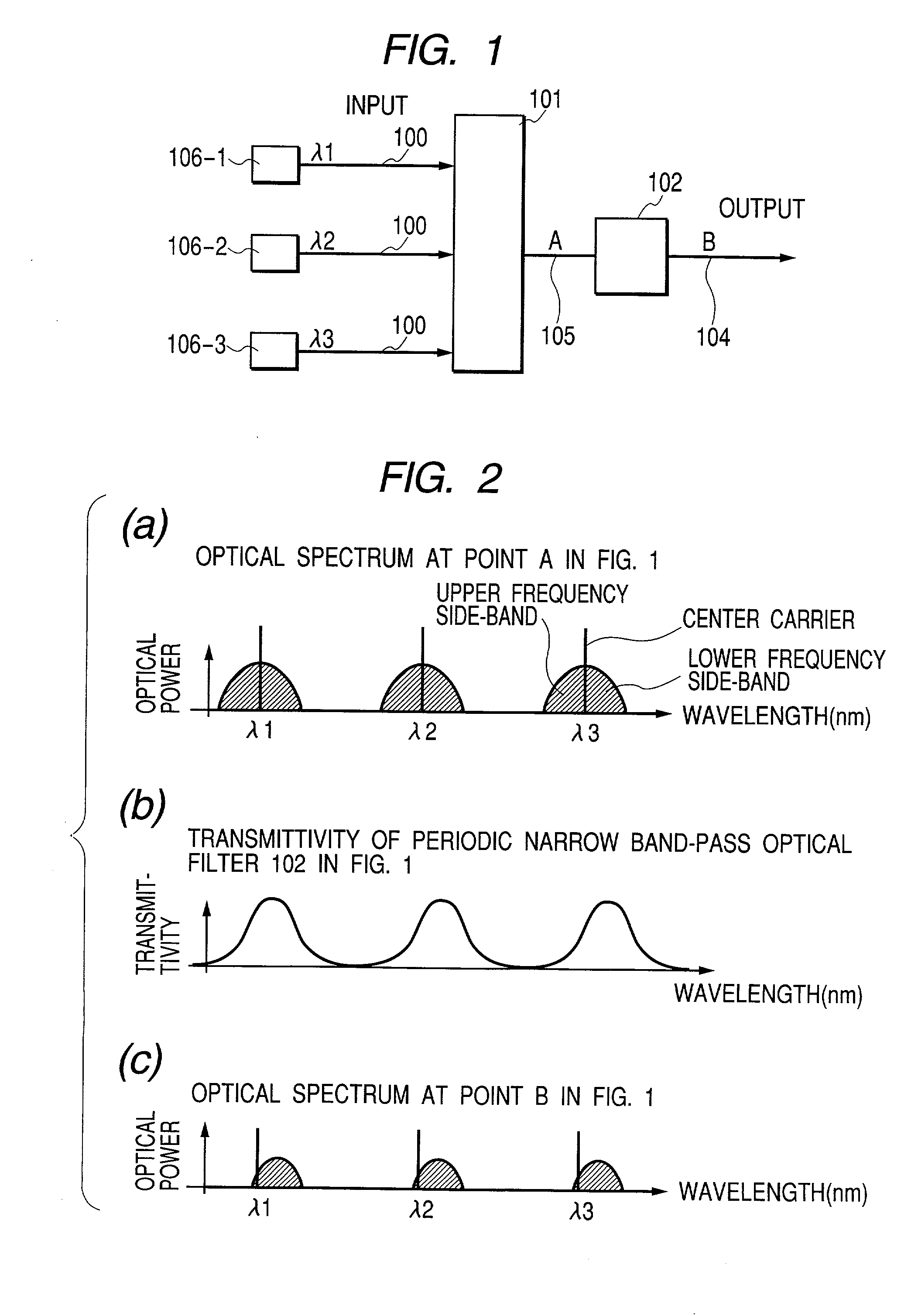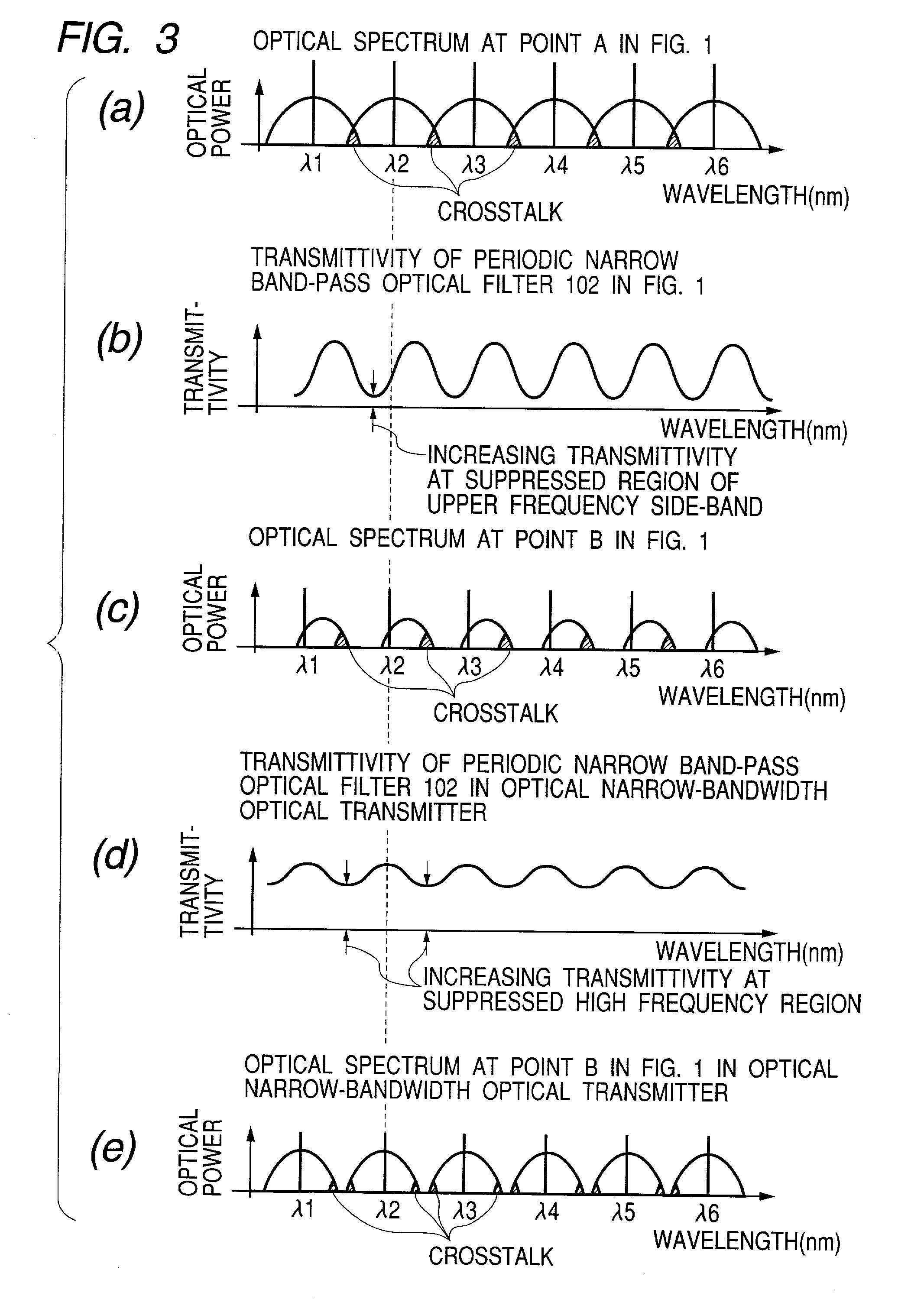Wavelength-multiplexed narrow-bandwidth optical transmitter and wavelength-multiplexed vestigial-side-band optical transmitter
a wavelength-multiplexed, optical transmitter technology, applied in multiplex communication, optical elements, instruments, etc., can solve the problems of increasing the cost of wavelength band and frequency width, the upper limit of its characteristics is limited, and the cost of increasing the cos
- Summary
- Abstract
- Description
- Claims
- Application Information
AI Technical Summary
Benefits of technology
Problems solved by technology
Method used
Image
Examples
first embodiment
[0048] FIG. 1 is a configuration diagram illustrating the present invention. It shows a configuration of a wavelength-multiplexed vestigial-side-band (VSB) optical transmitter according to the present invention. Its essential parts will be described as follows. To be more specific, output light of three signal light sources 106-1, 106-2, 106-3 having different wavelengths one another (wavelengths .lambda.1, .lambda.2, .lambda.3) is led to a first optical wavelength multiplexer 101 through input optical fibers 100, and is then wavelength-multiplexed. After that, a periodic narrow band-pass optical filter 102, which has periodic transmittivity relating to an input wavelength, filters the wavelength-multiplexed light collectively, and converts the filtered light into an optical VSB signal, which is output from an output fiber 104.
[0049] FIG. 2 illustrates principles of the present invention using optical spectra. FIG. 2(a) illustrates a spectrum of a light signal at an output point (po...
second embodiment
[0059] FIG. 4 is a configuration diagram illustrating the present invention. This example solves disadvantages found in the first embodiment of the present invention described above. This embodiment has a configuration in which crosstalk at the time of improvement in wavelength density is reduced by further wavelength-multiplexing the wavelength-multiplexed signal in FIG. 1 with another wavelength-multiplexed signal using a wavelength multiplexer such as an interleaver or and an optical coupler. Signal light sources 106-1, 106-3, 106-5 (wavelengths .lambda.1, .lambda.3, .lambda.5), which are odd number wavelengths if they are counted from the short wavelength side, are led to a first optical multiplexer 101-1 through input optical fibers 100, and are wavelength-multiplexed. In addition, signal light sources 106-2, 106-4, 106-6, which have even number wavelengths (wavelengths .lambda.2, .lambda.4, .lambda.6), are also wavelength-multiplexed in the second optical wavelength multiplexe...
third embodiment
[0068] FIG. 10 illustrates the present invention. To be more specific, FIG. 10 illustrates a configuration in which light signals are wavelength-multiplexed while the light signals are interleaved every three wavelengths in increasing order of wavelength. In other words, light signals are divided into three sets, that is to say, wavelengths 3N+1, 3N+2, and 3N (N is an integer); each of the sets is wavelength-multiplexed by the first optical wavelength multiplexers 101-1, 101-2, 101-3 according to the present invention respectively to convert it into a wavelength-multiplexed signal; and each of the wavelength-multiplexed signals is converted into a VSB signal by periodic narrow band-pass optical filters 102-1, 102-2, 102-3 respectively. Each spectrum of the light signals is shown in FIGS. 11(a), 11(b), 11(c) respectively. It is to be noted that the figures show only a part (six wavelengths) of optical spectra. After that, these light signals are wavelength-multiplexed by the second o...
PUM
 Login to View More
Login to View More Abstract
Description
Claims
Application Information
 Login to View More
Login to View More - R&D
- Intellectual Property
- Life Sciences
- Materials
- Tech Scout
- Unparalleled Data Quality
- Higher Quality Content
- 60% Fewer Hallucinations
Browse by: Latest US Patents, China's latest patents, Technical Efficacy Thesaurus, Application Domain, Technology Topic, Popular Technical Reports.
© 2025 PatSnap. All rights reserved.Legal|Privacy policy|Modern Slavery Act Transparency Statement|Sitemap|About US| Contact US: help@patsnap.com



